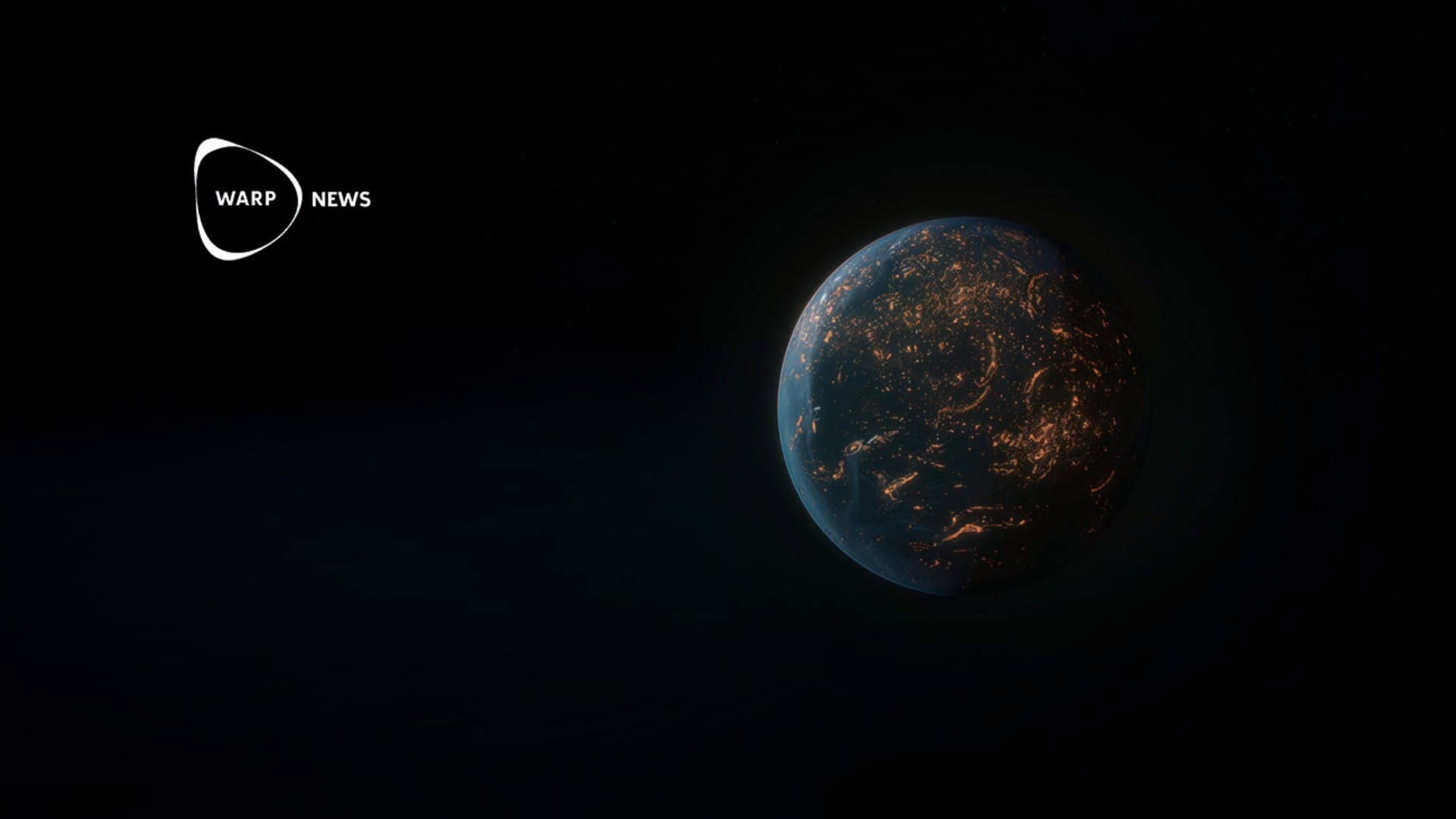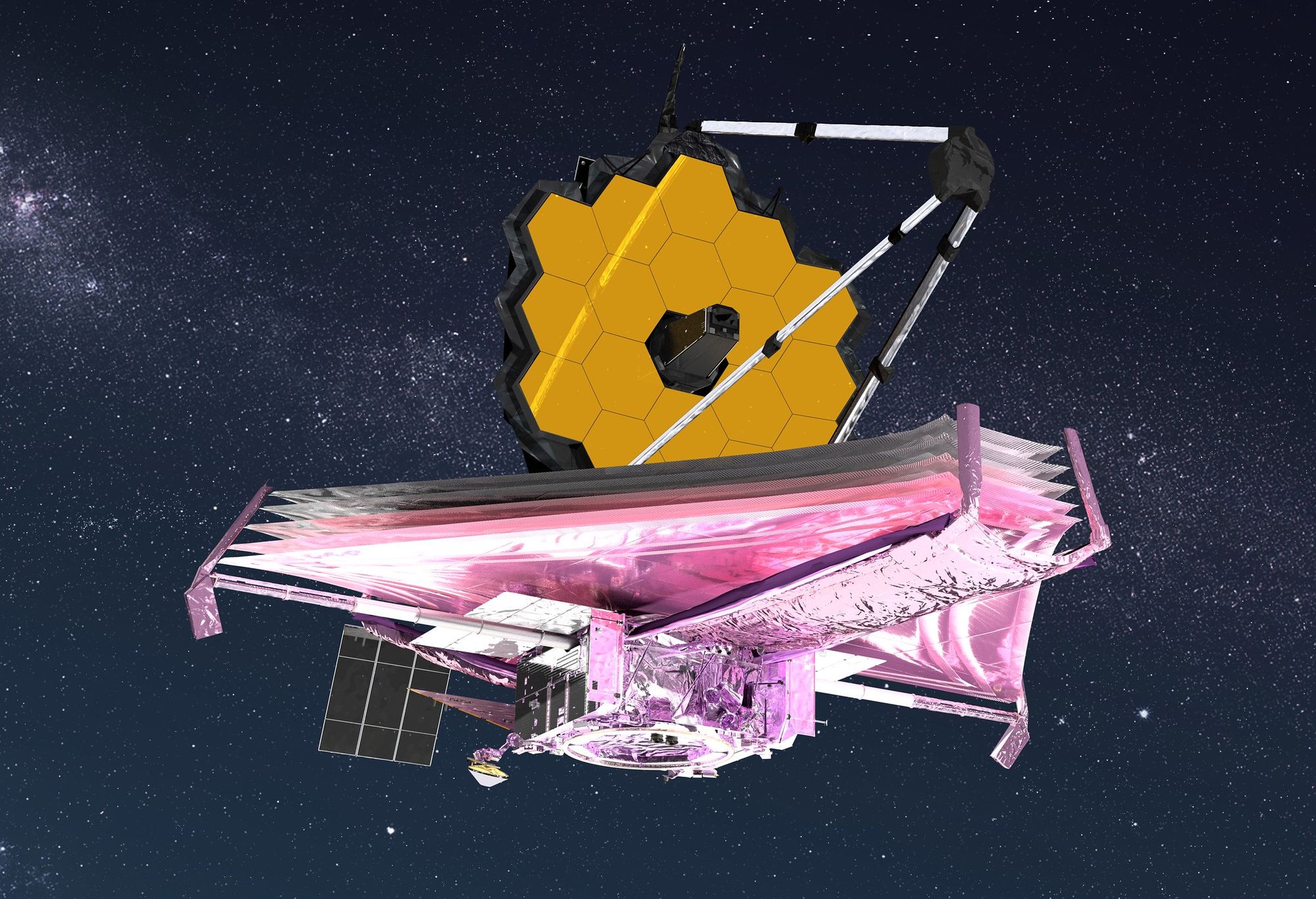
🔭 James Webb telescope – this is what you need to know
On December 24:th the James Webb will launch. Its remarkable capabilities will allow us to look further away and even further into the past than we've ever seen before.
Share this story!
After serving valiantly for 30 years, the Hubble Space Telescope is going to formally pass the torch as NASA's premier space telescope to its successor, the James Webb Space Telescope. On December 7th, it arrived in Guiana, France, where it's currently undergoing launch preparations in the final assembly building of Europe's Spaceport. The launch is currently scheduled for December 24th.
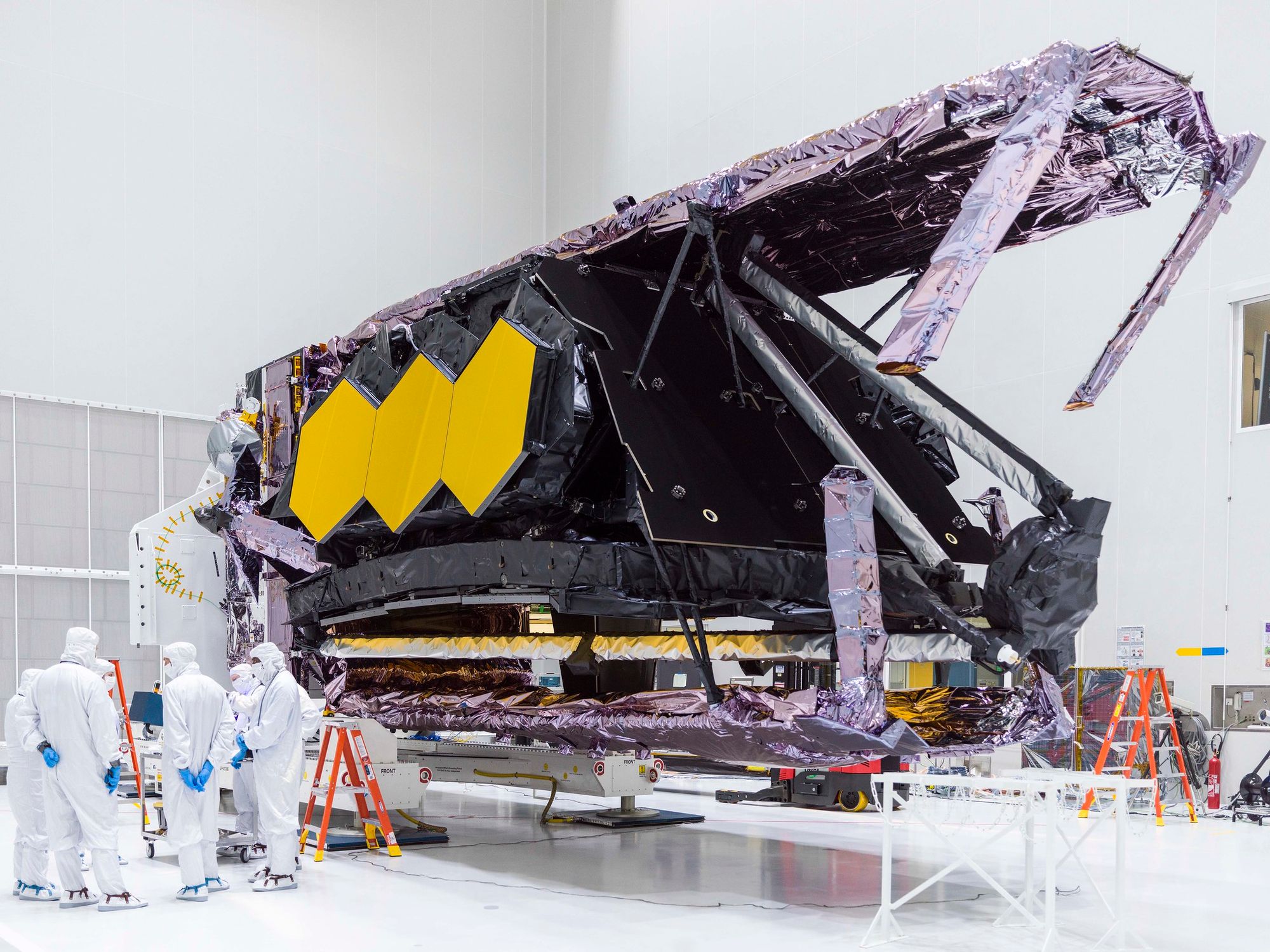
James Webb is a collaborative effort between NASA (the United States National Aeronautics and Space Administration), ESA (European Space Agency), and CSA (Canadian Space Agency). It's an infrared telescope tasked with looking further away into space and further into the past than any previous telescope.
Why infrared?
There are three main reasons why the infrared spectrum is of importance. First off, infrared light can pass through cosmic dust without scattering to the same extent as visible light. By penetrating such dust, the telescope will be able to see proto-stars forming inside nebulas or look through the atmosphere of a planet and ascertain its chemical composition.
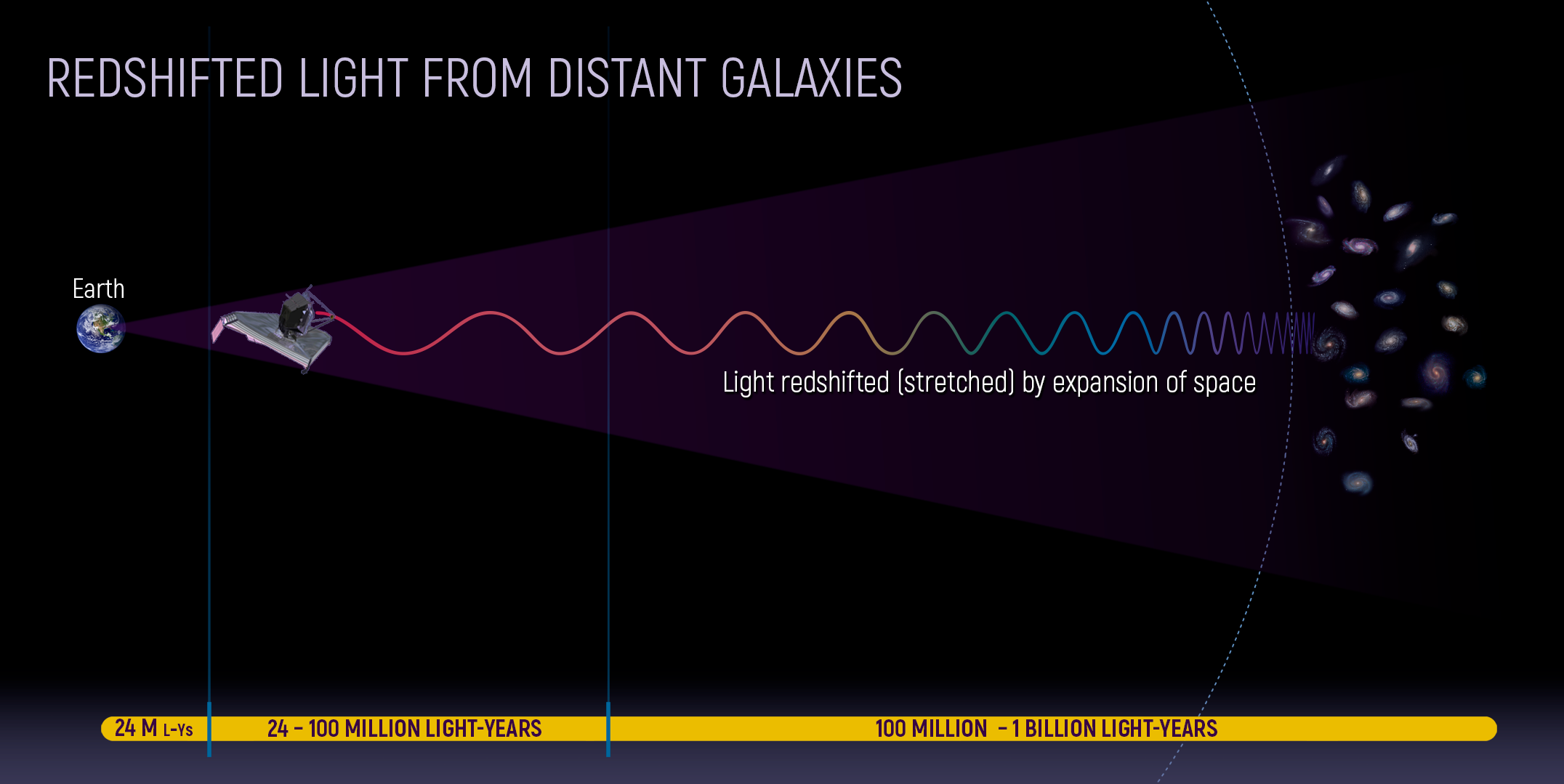
Second, there's a phenomenon referred to as redshift: as the universe expands, light is stretched, from visible wavelengths to the IR spectrum. As such, the telescope can see more distant destinations. And of course, because of the immense size of the universe, redshifting allows us to "see into the past": 13.5 billion years into the past, to be specific.
The hope is that this ability will enable researchers to see the formation and evolution of the universe, stars, and planets and thus shed light on phenomena such as dark matter and energy. It'll also be able to study exoplanets circling around other stars.
The JWT Mission
Unlike the Hubble telescope, James Webb isn't built with maintenance and upgrades in mind. That's because of its somewhat unusual L2 orbit. It's going to reach a distance of 1'500'000km from earth, and shall, technically speaking, orbit the sun rather than earth. Essentially, it'll hide in the earth's shadow to minimize exposure to heat as well as light from the sun, earth, and moon.
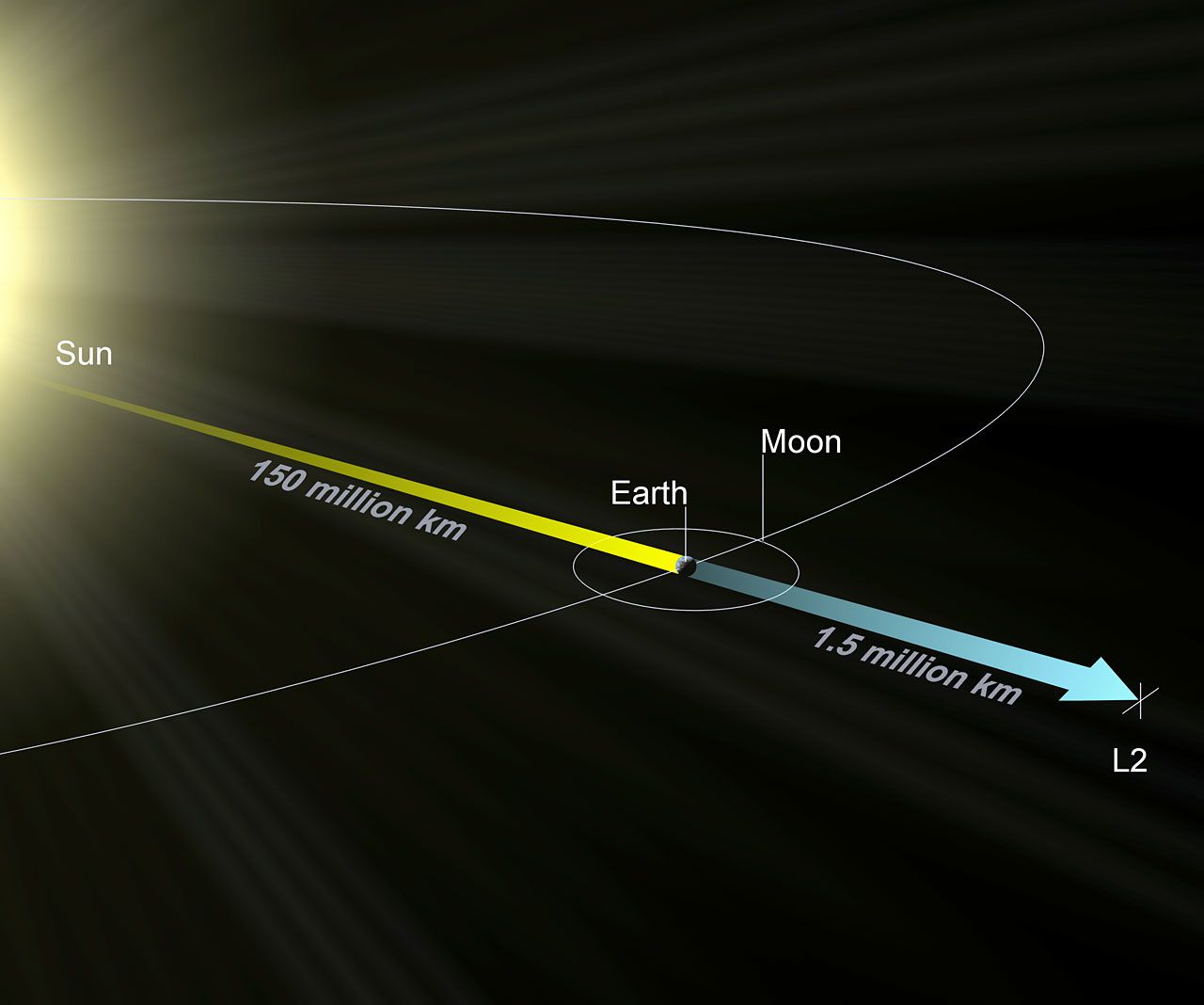
This orbit is unstable and James Webb will require constant course corrections. Expending fuel to maintain a stable orbit combined with the hostile conditions of space and the inability to maintain an asset so far from earth means that James Webb is expected to last 5 years, although hopes are it'll last closer to 1o years.
Image: NASA GSFC/CIL/Adriana Manrique Gutierrez
By becoming a premium supporter, you help in the creation and sharing of fact-based optimistic news all over the world.


